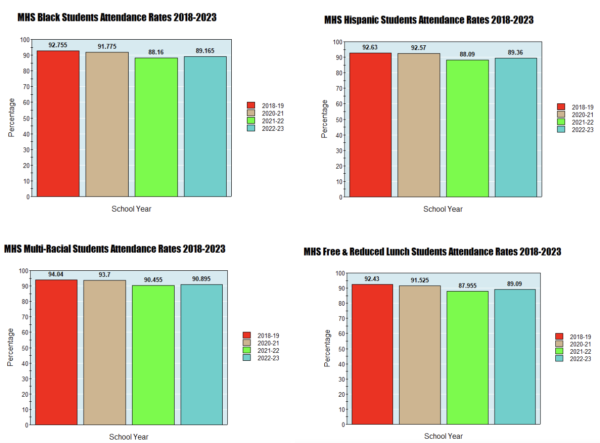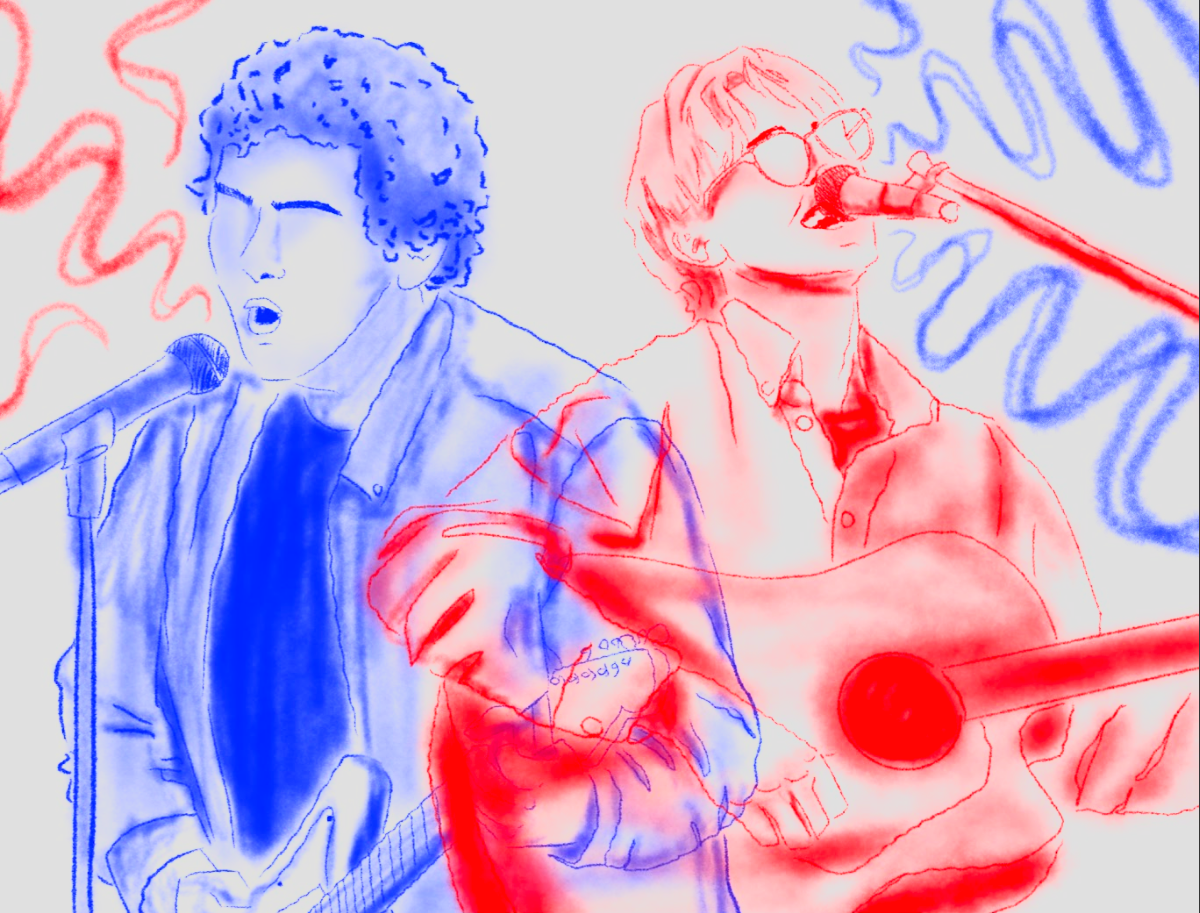This is an extension of the preliminary investigative report on unexcused absence data published in edition 6
16 million students nationwide were chronically absent during the 2022-23 school year, double the pre-pandemic truancy rate. Within USD383, chronic absenteeism continues to persist.
The Kansas Department of Education defines chronic absenteeism as missing 10% or more of school, for both excused and unexcused reasons. This means missing at least 18.5 days of school per year. In the post-COVID world of the 2021-22 school year, nearly 1 in 4 students were chronically absent statewide.
The impact of COVID-19 on attendance in Manhattan schools has been negative across all student subgroups. However, the attendance disparity is especially notable among minority subgroups, which include Black, Hispanic, Multi-racial, and Free & Reduced Lunch Students.

The figures above show the attendance rates of the four minority groups each school year from 2018-2023.
As seen above, all subgroups underwent a 3+ percent decrease in attendance rate from 2020-21 to 2021-22. Most significantly, this pushed attendance rates below the 90 percent threshold, indicating that on average, these subgroups were chronically absent based on KSDE’s standards. The sub-90% trend continues in 2022-23 for all subgroups above except for multiracial students.
However, it is important to consider the various variables at play. KSDE monitors absenteeism as a measure of missed class periods, not considering if these absences are excused or unexcused. For example, if you missed classes consistently for a sport, you may be considered “chronically absent” by KSDE’s definition.
This criteria creates a gray area for many administrators aiming to solve the issue. MHS Principal Michael Dorst primarily focuses on the number of unexcused absences, which can serve as a better indicator of true absenteeism.
The recent parent-notification attendance monitoring system has helped in this regard. According to Dorst, the number of unexcused absences at MHS has decreased significantly over the last month, beginning February at nearly 370 unexcused absences per day and now decreased to only 140 per day. Nonetheless, the impacts of chronic absenteeism — whether it’s excused or unexcused — are crystal clear.
Kids are missing too much school, period. According to Attendance Works, an organization that has helped many schools deal with absenteeism, students who are chronically absent from a young age are more likely to be off track in reading by third grade, below benchmarks in middle school and less likely to graduate high school and continue to post-secondary school.
Health support also plays a very important role in attendance. The way our district administrators and lawmakers utilize Medicaid or other medical resources/organizations to support students is key to solving the absenteeism issue.
Ultimately, kids and families face many barriers, whether it’s chronic health problems, transport, access to healthcare, or housing. Identifying these barriers within our students in the Elementary school stages will be crucial for the district to improve its attendance rates.
Some states, like Connecticut, have already implemented solutions. They shared absenteeism data consistently with the public. Subsequently, they identified districts of concern and helped those districts hire more staff and teachers, allowing for more home visits of chronically absent students. This increased attendance by 15 percentage points. How the KSDE and USD383 approach this issue, however, remains to be seen.




